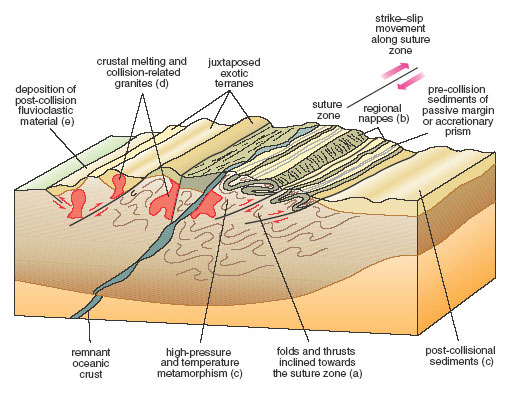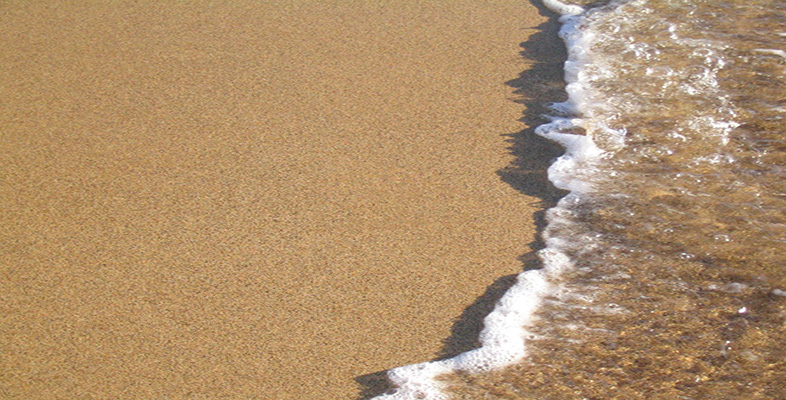4.6 Continental collision
It should be clear from the previous discussions that every ocean basin has a finite lifetime. As the basin closes, former passive and/or destructive plate margins are brought together and eventually collide. This can result in a discrete series of large continental and oceanic crustal fragments being wedged against each other. Collision is often oblique, in which case they are separated by major strike–slip fault systems. Each of these crustal fragments is referred to as an exotic terrane, and is recognised by its distinct sedimentary, igneous, metamorphic and structural history compared with that of its eventual neighbours.
Figure 8 is a compilation of the range of features that can form when destructive and passive margins collide. The five main features associated with the crustal thickening and shortening produced by collision are:
(a) deformation of pre-existing rock units, producing a series of folds and thrusts inclined towards the suture zone;
(b) formation of regional nappe structures, produced by outward gravity-driven sliding related to isostatic uplift of the thickened crust;
(c) high-temperature and high-pressure metamorphism;
(d) crustal melting, which produces collision-related granitic bodies; and
(e) deposition of thick post-collision (post-orogenic) fluvial (e.g. river-deposited) mixed sediments, forming molasse successions, which are a poorly sorted mixture of sands and conglomerates deposited on the landward side of the suture zone, produced by the rapid erosion of the newly uplifted mountains.

In addition to the five features listed above, continental collision zones often undergo significant amounts of strike–slip displacement. In some instances, the suture zone is marked by slices of oceanic lithosphere (referred to as an ‘ophiolite’) that have failed to be subducted, and have instead been forced up on to the other plate (i.e. obducted). Some small and incomplete examples of ophiolites can be found in the British Isles at Ballantrae (NX(25)0882), Fetlar–Shetland (HU(N41)69–HP(N42)61) and on the Lizard peninsula (SW(10)7015).
The range of rock assemblages present can be used to identify the types of margin that formed on either side of a closing ocean, as well as to detect changes in the tectonic environments on either side of the ocean, as closure proceeded.
